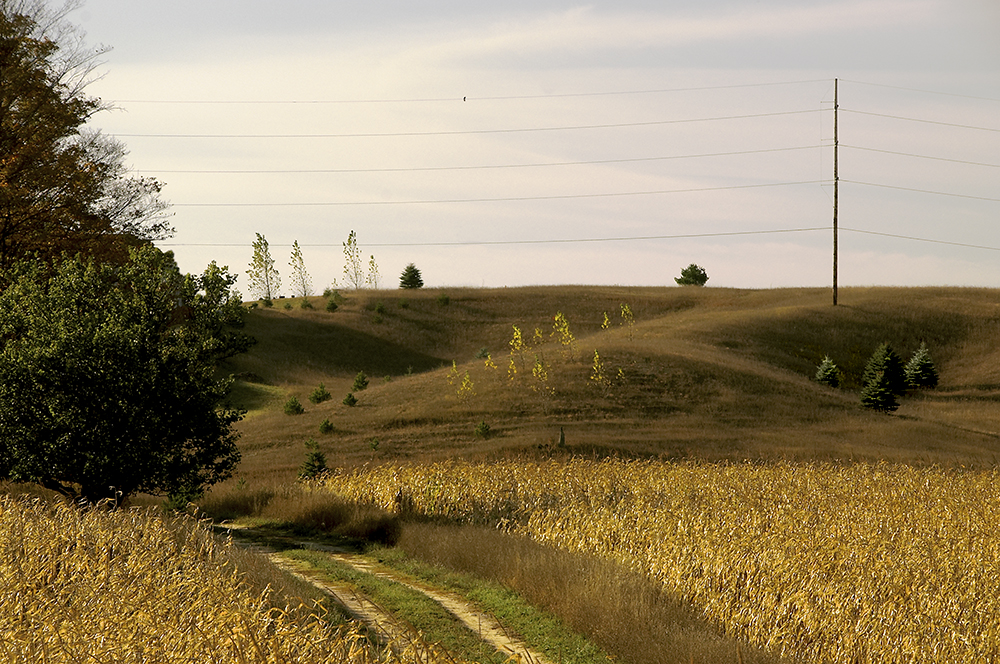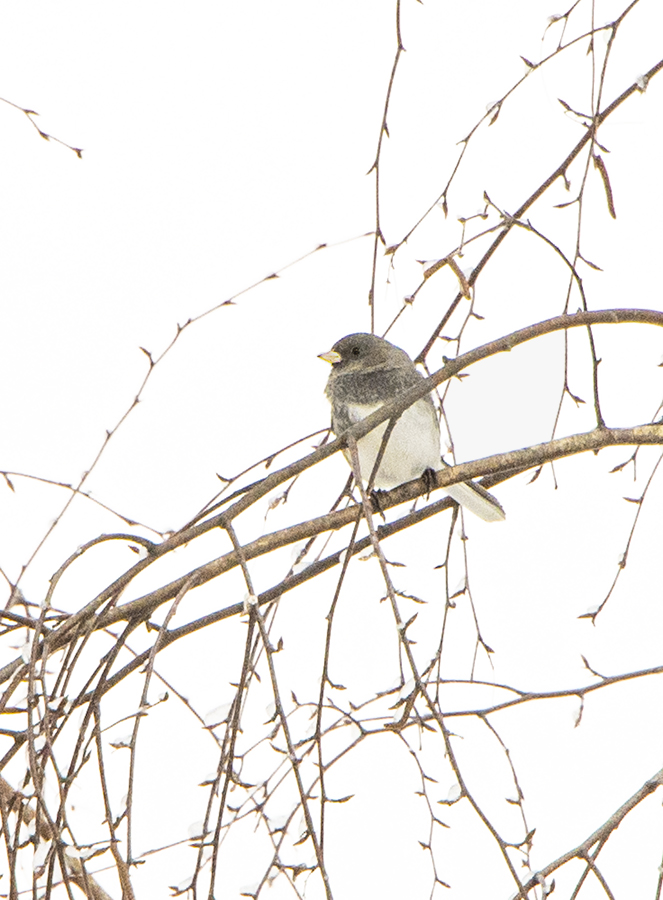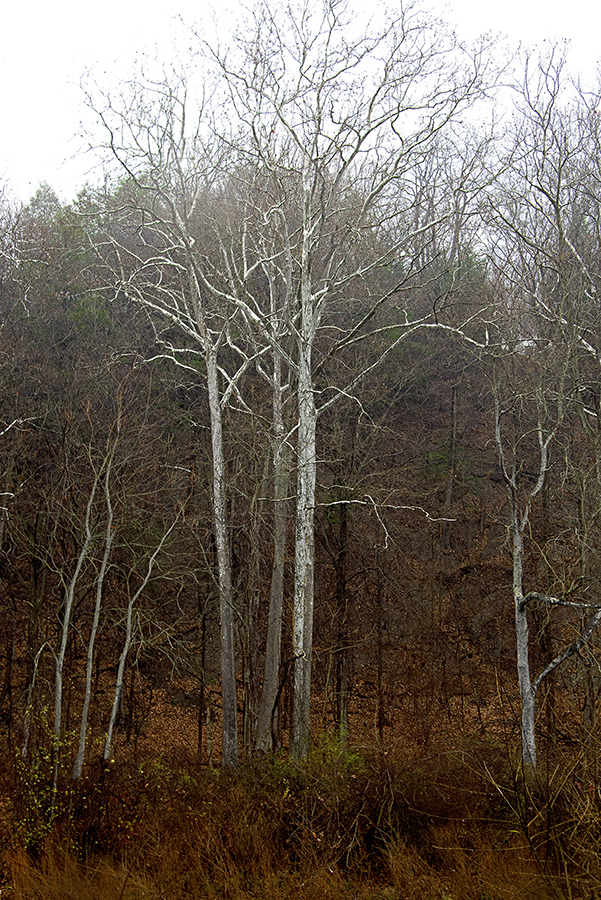
Bird on a Wire
Would that we all had a vantage point to ponder the present, peer deeply into the past and wish so earnestly for the future.
Straddling the 45th parallel, “Bird on a Wire” was taken at the intersection of E. Lincoln and County Rt. 641 in southern Leelanau County, Michigan. This particular farm, its owner unknown to me, lies on the latitude exactly halfway between the equator and North Pole. Other than the random (mostly 19th century) farms throughout the peninsula, sand dunes, boreal forests, glacial moraines and even the occasional tamarack bog make up the landscape tracing Lake Michigan’s eastern shoreline. The sand and rich loam that for millennia have sustained the balsam fir, paper birch, blue and black spruce and vast maple and beech forests eventually attracted Europeans to lumber and farm the land. These old farms contribute to the since of timelessness that pervades the peninsula, a geologic anomaly formed 200 million years ago and now the little finger of Michigan’s left hand.
The opening lines of Bruce Catton’s 1972 memoir, “Waiting for the Morning Train” lend to the ageless framework and the lens through which we see the landscape.
“First there was the ice; two miles high, hundreds of miles wide and many centuries deep. It came down from the darkness at the top of the world, and it hung down over the eaves, and our Michigan country lay along the side of the overhang.” Catton reflects on the geologic forces that created his childhood home, imprinting indelibly upon him the history, values and memories of Benzonia, the small farm town bordering Leelanau county. The gentle dunes and fertile soil that produce Leelanau’s great orchards roll undeterred into Benzie county.
The history and my belabored story of the Leelanau peninsula ultimately relate to the image of the bird on the wire, at least with respect to why I thought the photo was relevant. At the time I realized the bird must have had a remarkable view of the land. From its height on the wire Lake Michigan spreads to the horizon on its left (west); the Grand Traverse Bay to its right (east). Looking north towards the camera the village of Northport would be just visible at the tip of the peninsula. And over its shoulder dozens of farms along with the remnants of old growth forests unrolled to the south.
The natural irony of course being the most insignificant element in the image having the greatest perspective.







